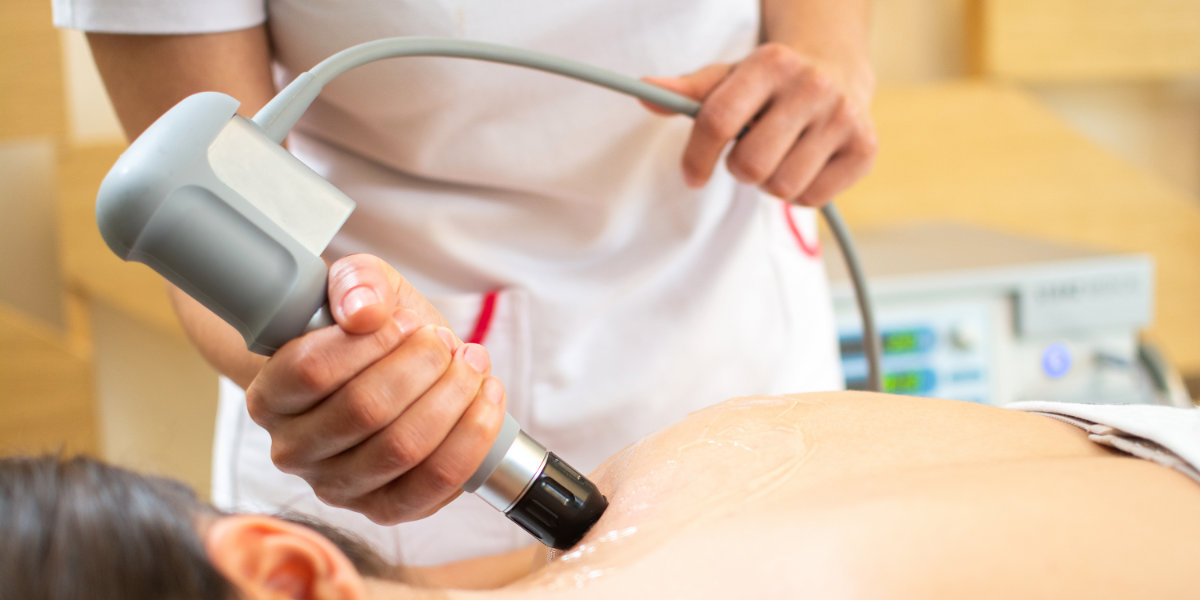Extracorporeal Shockwave Therapy
What is it?
Extracorporeal Shockwave Therapy (ESWT) is a noninvasive surgical procedure that uses sound waves to stimulate healing in some musculoskeletal conditions. “Extracorporeal” means “outside of the body” and refers to the way the therapy is applied.
Origins of ESWT
The basic science behind the use of ESWT is rooted in the treatment of kidney stones via Lithotripsy. Lithotripsy is a noninvasive medical procedure that uses ultrasound shockwaves to break up kidney stones into small particles that can then be passed by the body. This procedure has been around since 1980, and in the process of treating thousands of patients, it was found that many people who underwent the procedure noticed the disappearance of other unrelated aches and pains. It was at this point that scientists began to consider shockwave therapy may have an effect on healing other sorts of tissues. From there specialized machines were specifically developed with the idea of using extracorporeal shockwaves on other parts of the body.
How does it work?
ESWT is believed to cause microtrauma to the tissue, increasing vascularization and neogeneration which helps decrease pain and promote healing in tendons. Healing is also promoted by altering the orientation of the tendon and changing cell permeability. The high energy shock waves may help to disintegrate calcific deposits.
Indications
- Heel spur/Plantar Fasciitis
- Calcific/Non-Calcific Tendonitis
- Achilles Tendonitis
- Radial/Ulnar Epicondylitis
- Patellar Tendinopathy
- Shin Splints
- Trochanteric Bursitis/Tendonopathy
- Iliotibial Band Pain
- Trigger Points
Treatment Period
ESWT is typically administered once a week for three weeks, followed by a two-week break period. If needed, two more treatments will be administered over the course of two weeks. Please be aware treatment period will vary depending on the nature and severity of the injury. Symptoms will continue to improve three months post-treatment.
